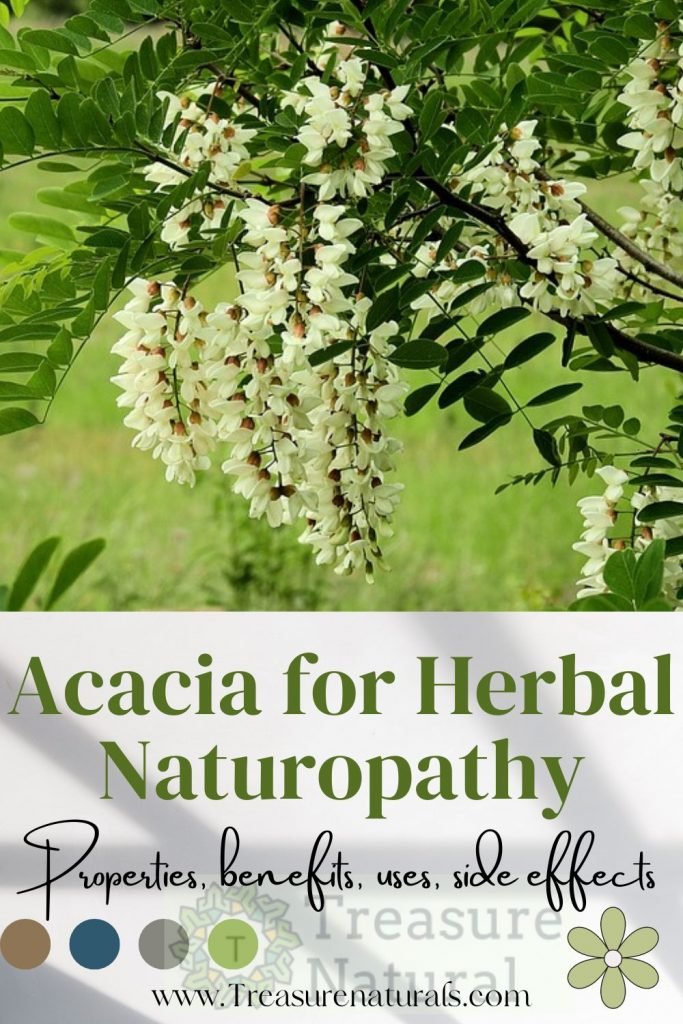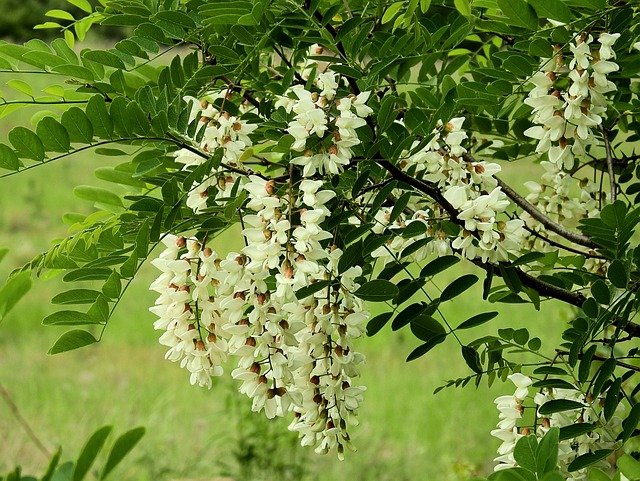
Acacia ( Robinia pseudoacacia ) is a medicinal plant of the Fabaceae family with marked healing properties. Thanks to its astringent, antiseptic and anti-inflammatory action, acacia is used against dyspepsia accompanied by diarrhea and in enteritis. Let’s find out better.
Properties and benefits of Acacia
Acacia has the following properties: astringent, antiseptic and anti-inflammatory. These properties are conferred by the presence of active principles such as catechetical tannins, flavonoids and flavan derivatives and mucilages.
Acacia is prescribed in the treatment of dyspepsia accompanied by diarrhea, in enteritis and as a balsamic expectorant in catarrhal forms of the respiratory system.
For external use, acacia is used, instead, to treat gingivitis, stomatitis, pharyngitis. The presence of catechol and quercetin confer vitaminoP-like properties which may justify its topical use aimed at soothing inflamed mucous membranes.
How to use
The use of acacia is typically pharmaceutical, as it is used for the production of emulsions and tablets. However, it can also be used as a herbal remedy for its astringent, antiseptic and anti-inflammatory action.
Acacia, being a highly nectariferous plant, also has great importance in beekeeping. Acacia honey is in fact among the best known and most appreciated.
Its light color, the fact that it remains liquid regardless of the temperature, its light smell, its delicate flavor and its very low acidity are the basis of its popularity with consumers; no other monoflora honey possesses all these qualities at the same time.
Furthermore, it has a high fructose content (which is why it does not crystallize). However, it has a low content of mineral salts and enzymes. Acacia honey contains large amounts of chrysin, a powerful flavonoid.
Among the various uses that can be made of acacia there is cough with phlegm, difficult digestion, diarrhea. For external use, it is used in case of gingivitis, stomatitis, bad breath, sore throat.
Contraindication of Acacia
Acacia has no secondary and toxic effects at therapeutic doses, unless there is a particular individual sensitivity.
Any side effects (gastric irritation and drug interactions) are due to the presence of tannins.
Description of the plant
Acacia ( Robinia pseudoacacia) is a plant of the Fabaceae family, also called Leguminosae, native to North America and naturalized in Europe and other continents.
Acacia is a plant with an arboreal habit (up to 25 meters high). The bark is light brown in color and very wrinkled. The leaves are imparipinnate, open during the day while at night they tend to overlap.
The flowers are white or cream, gathered in hanging clusters with a very pleasant scent. There are numerous long and solid thorns on the younger branches.
Habitat of Acacia
The distribution area of acacia extends from the southern Himalayas (Pakistan, India) to Burma and Thailand. Among the numerous qualities, the most valuable is the Catechu of Bombay.
The acacia prefers a dry and well-drained non-calcareous soil, a position in full sun sheltered from cold winds; in cold climates they can be cultivated in pots to be able to shelter them in suitable places in the winter months.
Background

The name of the acacia derives from the Greek akakia, candor and innocence, probably referring to its flowers. Since it resists drying out, it is a symbol of immortality. In the Middle East it is a good omen.






